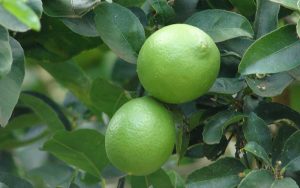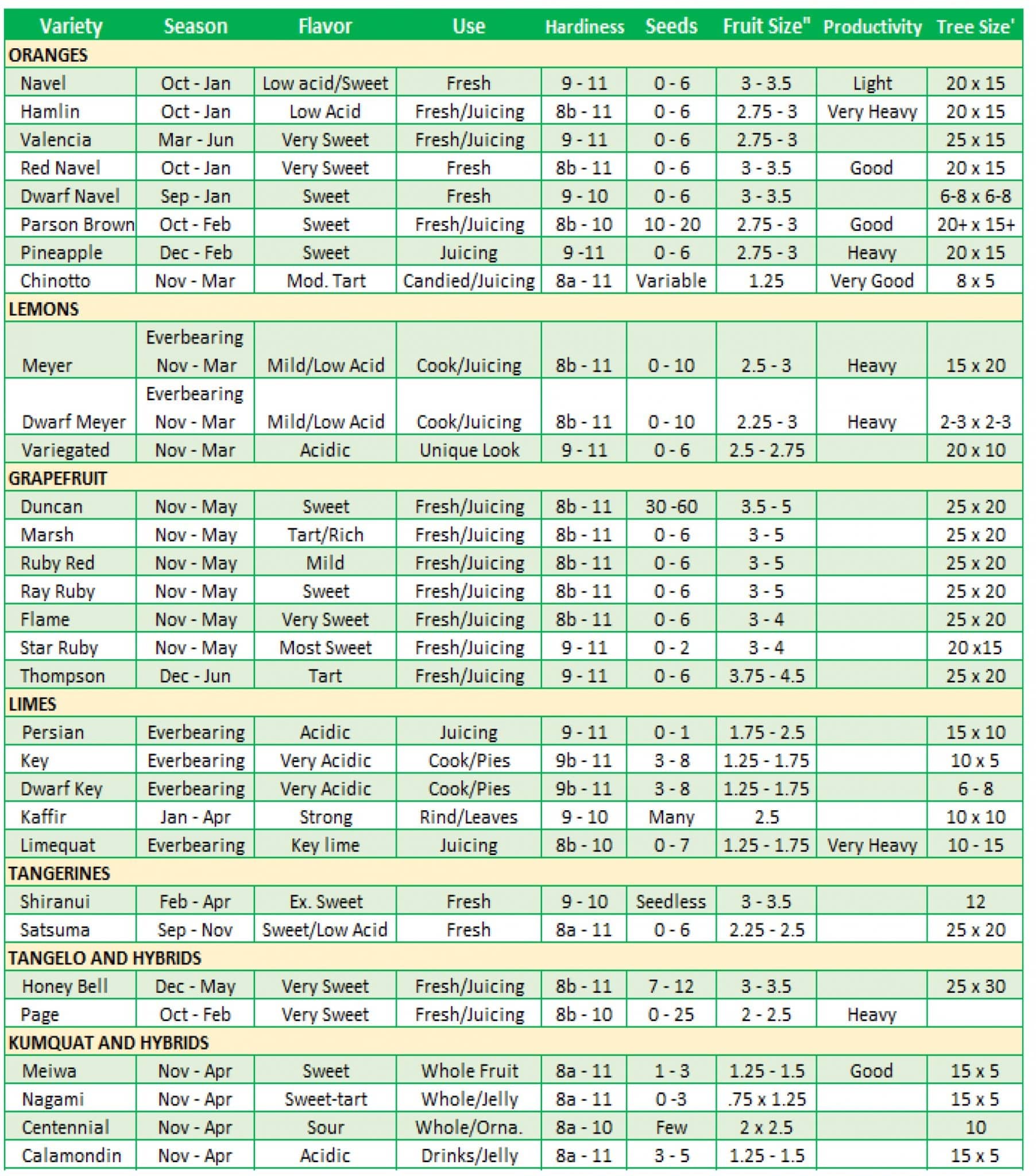
Citrus Variety Guide
These are guidelines, as characteristics can vary due to many factors. In some cases, flavor can be affected by temperature, length of time on the tree, and age of the tree. Cold tolerance can vary depending on temperature patterns (warm temperature periods interrupting cooler periods can reduce cold tolerance). Cold hardiness may also be better in older trees. The best cold tolerance is achieved with trifoliate rootstock. Some cultivars, mainly tangerine hybrids, may bear larger fruit, more fruit and produce more seeds when interplanted with other cultivars. Tree size can vary depending on root-stock, soil conditions, and whether the tree is grown in the ground or a container.
Most citrus cultivars are self-fertile meaning they don’t need another citrus tree to produce fruit. Citrus flowers are perfect, having both sexes on the same blossom so that self-pollination can usually occur. However some varieties, mainly tangerine hybrids, require cross pollination to produce a good crop because they are self-incompatible. These include Minneola (Honeybell), Osceola, Nova, Orlando, Robinson, Page and Sun-burst. Temple is a good pollinizer cultivar for all of these.
Insect pollinators are needed for the cultivars that are not self-fertile. There is evidence that pollinators also enhance production in self-fertile trees. Insects, mostly honey bees, are the main pollinators since the heavy, sticky citrus pollen can’t be moved by the wind. Avoid the use of insecticides that are hazardous to bees, especially during the bloom period.
Please see our Citrus Care Guide for growing instructions.
Click Here for this guide as a PDF.

